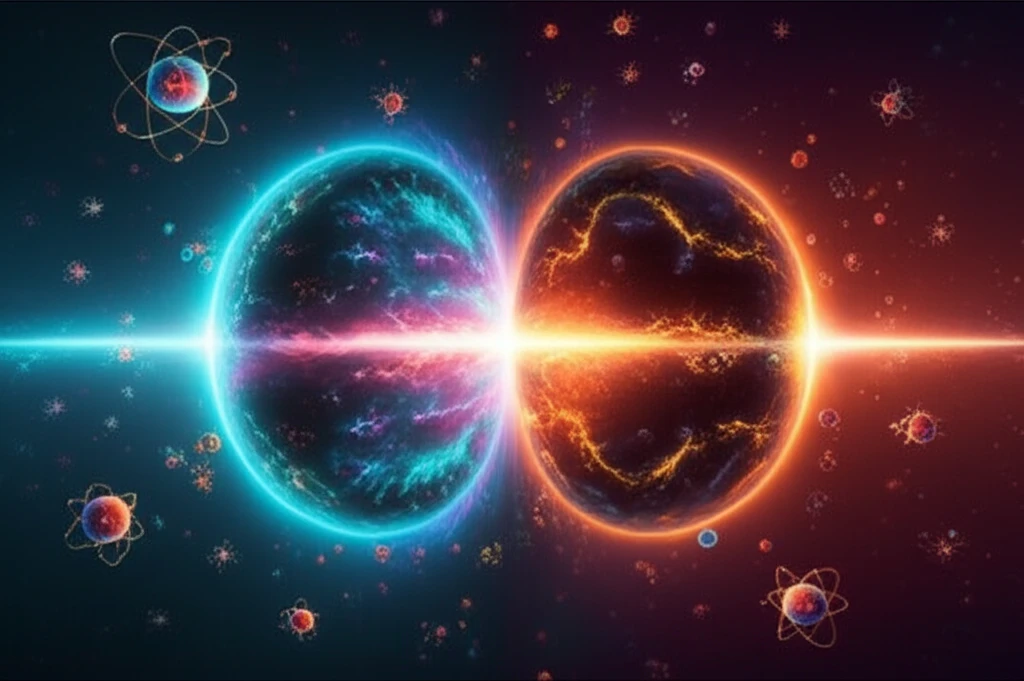
Unlocking the Secrets of Quark-Gluon Plasma: A Simple Model's Surprising Success
"Scientists are using a simplified model to understand the exotic state of matter that existed moments after the Big Bang, offering new insights into the universe's earliest days."
Imagine recreating the conditions of the universe just microseconds after the Big Bang. That's precisely what scientists are attempting to do with heavy-ion collisions, smashing together atomic nuclei at incredibly high energies. These experiments create a fleeting state of matter known as quark-gluon plasma (QGP), a superhot, dense soup of fundamental particles.
Quantum chromodynamics (QCD), the theory governing the strong force, predicts that at extreme temperatures and densities, ordinary matter undergoes a phase transition into this deconfined state. Understanding QGP is crucial for unraveling the mysteries of the early universe and the fundamental nature of matter.
While experimental efforts to study QGP are ongoing at facilities like RHIC (BNL) and LHC (CERN), theoretical models play a vital role in interpreting the data and providing a deeper understanding of its properties. One such approach involves using simplified phenomenological models to describe the equation of state (EoS) of QGP, which relates its pressure, temperature, and energy density.
The Power of Simplicity: Modeling Quark-Gluon Plasma

Researchers have developed a phenomenological model to study the equation of state of QGP, incorporating the concept of an effective quark mass. This effective mass accounts for the interactions of quarks and gluons within the plasma, where they behave as quasiparticles influenced by the surrounding medium.
- Effective Mass: Quarks and gluons gain an effective mass due to interactions within the medium.
- Equation of State (EoS): The model provides an EoS for QGP, linking pressure, temperature, and energy density.
- High-Energy Collisions: The model successfully describes QGP properties in nucleon collisions.
- Model Validation: Results align with earlier theoretical studies and lattice QCD calculations.
What Does This Mean for Understanding the Early Universe?
This research demonstrates that even simplified models can provide meaningful insights into the complex world of quark-gluon plasma. By incorporating the concept of effective quark mass, the model successfully predicts the equation of state of QGP and aligns with more sophisticated theoretical calculations and experimental observations.
The success of this phenomenological model highlights the importance of effective descriptions in physics. By focusing on the essential degrees of freedom and parameterizing complex interactions, researchers can gain a deeper understanding of emergent phenomena like QGP.
Ultimately, these efforts contribute to our understanding of the fundamental nature of matter and the conditions that prevailed in the early universe. By recreating and studying QGP in the laboratory, scientists are piecing together the puzzle of our cosmic origins.
